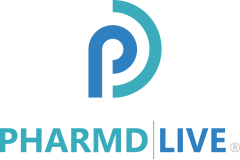
Introduction: Why Patient Consent Matters More Than Ever in RPM
Remote Patient Monitoring (RPM) is revolutionizing chronic care management by improving patient outcomes and unlocking sustainable revenue streams for healthcare providers. But in 2025, RPM patient consent compliance is more than a billing formality; it is a legal, regulatory, and ethical imperative.
Without documented patient consent:
- Claims can be denied
- Medicare reimbursement is forfeited
- Practices face potential audits, penalties, or disqualification from CMS programs
- Trust between providers and patients erodes
These consequences are what no executive or practice manager can afford to ignore.
Therefore, RPM programs must prioritize consent not only to meet regulations but to build integrity into care delivery.
Regulatory Requirements: CMS and Medicare Consent Guidelines
The Centers for Medicare & Medicaid Services (CMS) explicitly require documented patient consent before initiating RPM services. Whether verbal or written, consent must be captured and retained in the patient’s record, including:
- The purpose and benefits of RPM
- What data will be collected and how it will be used
- HIPAA-compliant data privacy protections
- Patient responsibilities, rights, and opt-out procedures
- Date, time, method, and personnel involved in the consent
Importantly, consent may be obtained by auxiliary staff under general supervision, and CMS permits it to be secured at the time RPM services begin, provided it is documented properly.
Providers must ensure patients understand the full scope of RPM, including data use and privacy protections, before enrollment.
Failure to meet these requirements puts practices at risk of non-compliance, and CMS audits increasingly scrutinize consent documentation.
Explore more: CMS Remote Patient Monitoring Coverage
The Hidden Risks of Poor Consent Practices
Financial and Legal Consequences
Many practices mistakenly treat consent as a checkbox task. Vague documentation like “patient consented” fails under audit scrutiny. Instead, robust consent logs should capture:
- Who explained the RPM program
- What exactly was shared with the patient
- When and how consent was obtained
Failure to comply with RPM patient consent compliance 2025 can lead to:
- Claim denials and loss of reimbursement
- Regulatory fines and penalties
- Legal vulnerability under HIPAA and the False Claims Act
- Potential exclusion from Medicare programs
CMS requires detailed, traceable records for every enrolled patient to withstand audits and investigations.
Provider Accountability
Outsourcing RPM services to third-party vendors, providers retain full responsibility for compliance. This includes:
- Reviewing vendor workflows for adherence to consent protocols
- Maintaining medical supervision
- Ensuring all consent aligns with CMS and HIPAA regulations
Building Trust: Ethical and Legal Dimensions
Beyond regulatory mandates, patient consent is fundamentally an ethical obligation. It is also about transparency and trust.
RPM involves continuous biometric monitoring and data sharing across various platforms and third-party devices. Unfortunately, many patients are unaware of how their data is stored, accessed, or utilized for commercial purposes.
To ethically deploy RPM in 2025:
- Providers must clearly explain how data flows across the care team
- Patients should know what third parties (e.g., device vendors) are involved
- Consent materials must be accessible, understandable, and rights-focused
- An effective consent process reflects respect for autonomy, critical in a data-driven healthcare environment.
In 2025, patient-centered RPM programs must prioritize clear, accessible, and patient-friendly consent processes.
PharmD Live: Raising the Bar in RPM Consent Compliance
PharmD Live, a clinical intelligence and virtual care platform, exemplifies industry-leading RPM consent and compliance. Our pharmacist-led model integrates clinical insight, automation, and regulatory safeguards into every enrollment.
PharmD Live’s RPM platform ensures:
✅ Comprehensive patient education with personalized consent scripts
✅ HIPAA-compliant documentation embedded into workflows
✅ Real-time oversight of enrollment, documentation, and patient interactions
✅ Continuous auditing to flag and address consent gaps
By embedding compliance into every RPM touchpoint, PharmD Live reduces risk and improves patient confidence.
Explore PharmD Live’s RPM Compliance Solutions
Actionable Steps for Healthcare Leaders
To stay compliant and confident in 2025, practices must take strategic action:
✅ Standardize Consent Workflows
- Use clear, patient-friendly language in consent forms
- Document verbal and written consent with date, time, and detailed explanation
✅ Train Your Teams
- Train clinical and administrative teams on CMS documentation and HIPAA privacy requirements
- Emphasize the importance of thorough consent to prevent claim denials
✅ Perform Regular Compliance Audits
- Regularly review RPM records for completeness and accuracy
- Identify and resolve compliance gaps proactively
Audit consent logs monthly. Verify completeness, clarity, and traceability.
✅ Partner with Compliant Vendors
- Partner with compliance-focused RPM vendors like PharmD Live
- Ensure vendor workflows are traceable and HIPAA-aligned
Conclusion: Consent Is the Cornerstone of RPM Success in 2025
In 2025, RPM patient consent compliance is no longer optional. It is the foundation of ethical, effective, and billable remote care. Practices that treat consent seriously will safeguard reimbursement, reduce audit risk, and foster long-term patient trust. Those who don’t will fall behind.
By prioritizing consent and partnering with leaders like PharmD Live, healthcare organizations can align care, compliance, and confidence in a rapidly evolving digital health landscape.
References (AMA Style with Embedded Links)
- Tashnek D. Remote patient monitoring under scrutiny: top compliance mistakes to know. Physicians Practice. April 15, 2025. [Accessed June 26, 2025].
- Centers for Medicare & Medicaid Services (CMS). Telehealth & Remote Patient Monitoring: MLN901705. 2025. [Accessed June 26, 2025].
- CMS. Remote Patient Monitoring Coverage Guidelines. [Accessed June 26, 2025].
- U.S. Department of Health and Human Services, Office of Inspector General (OIG). Additional Oversight of Remote Patient Monitoring in Medicare Is Needed. 2024. [Accessed June 26, 2025].
- Kruse CS, Soma M, Pulluri D, Nemali NT, Brooks M. The effectiveness of remote patient monitoring on adherence, hospital readmission, and mortality: a systematic review. J Patient Cent Res Rev. 2021;8(1):51-59. [Accessed June 26, 2025].
- PharmD Live. Remote Patient Monitoring Solutions. [Accessed June 26, 2025].
- Smart Meter. CMS Reimbursement & Consent for Remote Patient Monitoring. [Accessed June 26, 2025].
- LinkedIn. Post-Sept 2025 RPM Regulatory Changes Overview. [Accessed June 26, 2025].








